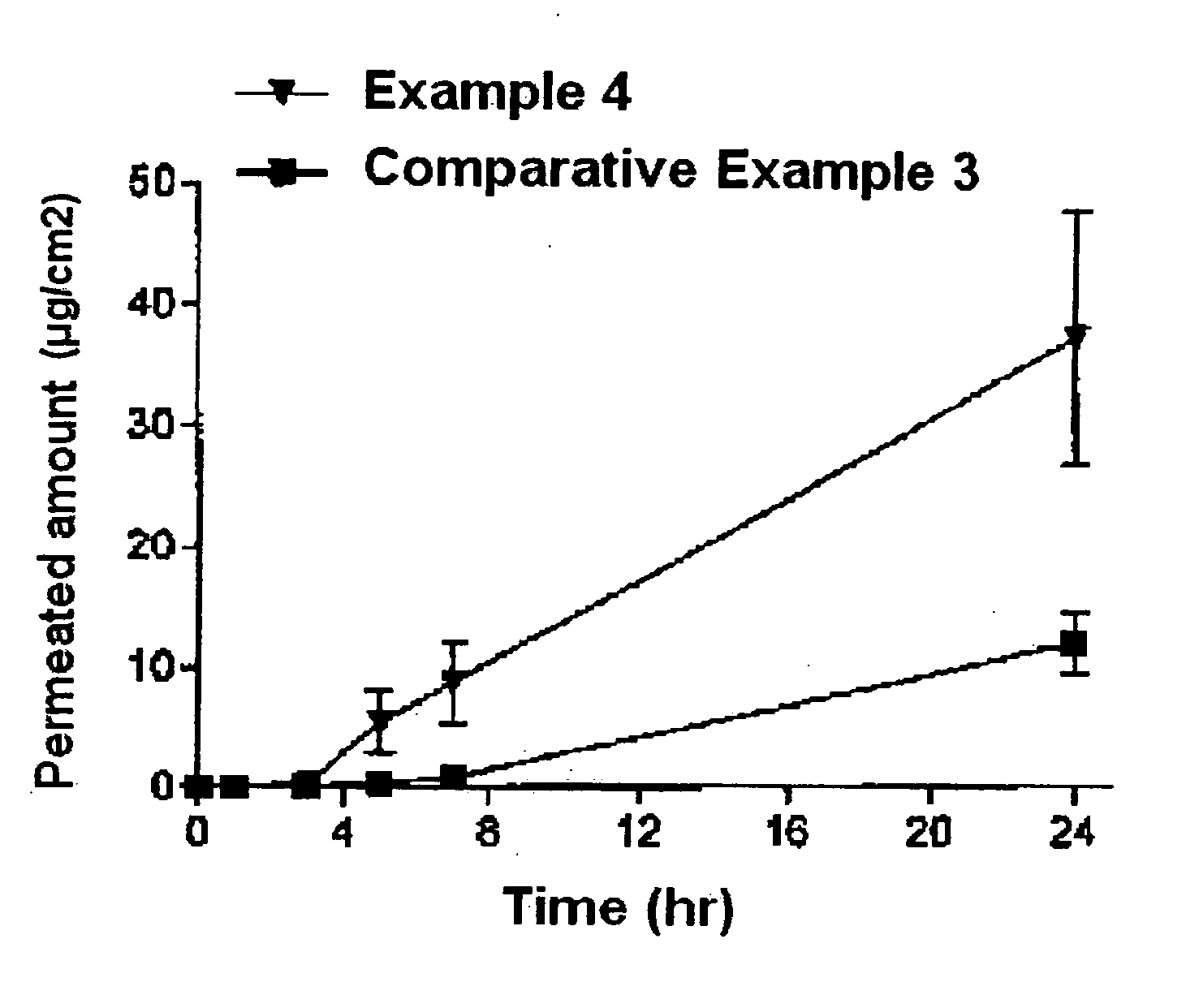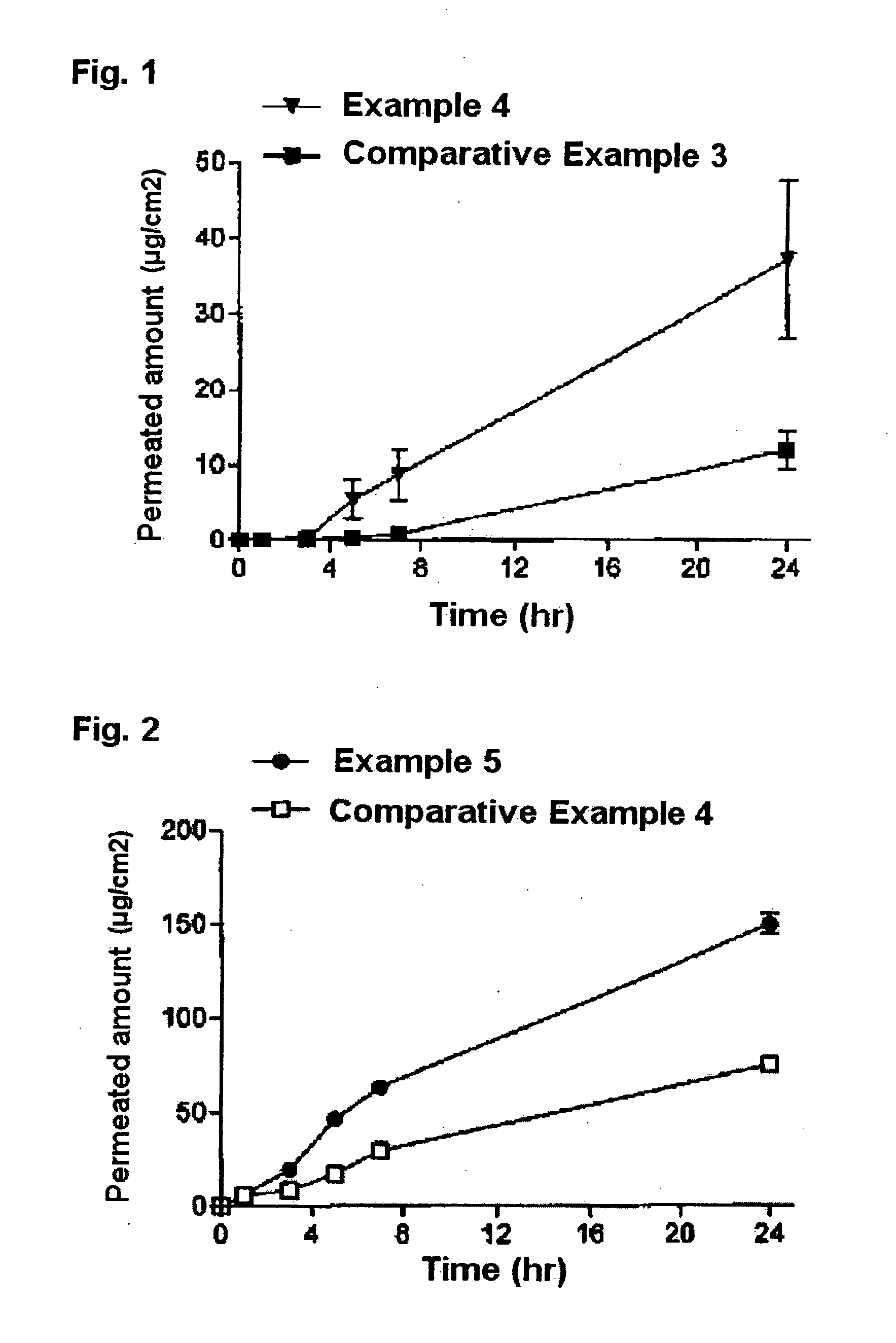Crosslinkable pressure-sensitive adhesive for skin
- Summary
- Abstract
- Description
- Claims
- Application Information
AI Technical Summary
Benefits of technology
Problems solved by technology
Method used
Image
Examples
example 1
[0059] After adding 5 parts of the solution obtained in Copolymer B Production Example 1 to 100 parts of the solution obtained in Copolymer A Production Example 1, the two solutions were uniformly stirred with a dissolver to obtain a mixture. The obtained mixture was coated onto a silicone-treated PET (polyethylene terephthalate) film with a thickness of 35 μm to a post-drying pressure-sensitive adhesive layer thickness of 100 μm and dried, and then the pressure-sensitive adhesive layer was laminated on the PET layer of a PET / EVA (ethylenevinyl acetate copolymer) laminated film with a thickness of 35 μm to obtain a pressure-sensitive adhesive sheet for skin.
example 2
[0060] After adding 4 parts of the solution obtained in Copolymer B Production Example 1 and 20 parts of isopropyl myristate as a plasticizer to 100 parts of the solution obtained in Copolymer A Production Example 1, the components were uniformly stirred with a dissolver to obtain a mixture. The obtained mixture was used for the same procedure as in Example 1 to obtain a pressure-sensitive adhesive sheet for skin.
example 3
[0061] After adding 4 parts of the solution obtained in Copolymer B Production Example 2 and 30 parts of isopropyl palmitate as a plasticizer to 100 parts of the solution obtained in Copolymer A Production Example 2, the components were uniformly stirred with a dissolver to obtain a mixture. The obtained mixture was used for the same procedure as in Example 1 to obtain a pressure-sensitive adhesive sheet for skin.
PUM
| Property | Measurement | Unit |
|---|---|---|
| Percent by mass | aaaaa | aaaaa |
| Percent by mass | aaaaa | aaaaa |
| Percent by mass | aaaaa | aaaaa |
Abstract
Description
Claims
Application Information
 Login to View More
Login to View More - R&D
- Intellectual Property
- Life Sciences
- Materials
- Tech Scout
- Unparalleled Data Quality
- Higher Quality Content
- 60% Fewer Hallucinations
Browse by: Latest US Patents, China's latest patents, Technical Efficacy Thesaurus, Application Domain, Technology Topic, Popular Technical Reports.
© 2025 PatSnap. All rights reserved.Legal|Privacy policy|Modern Slavery Act Transparency Statement|Sitemap|About US| Contact US: help@patsnap.com


